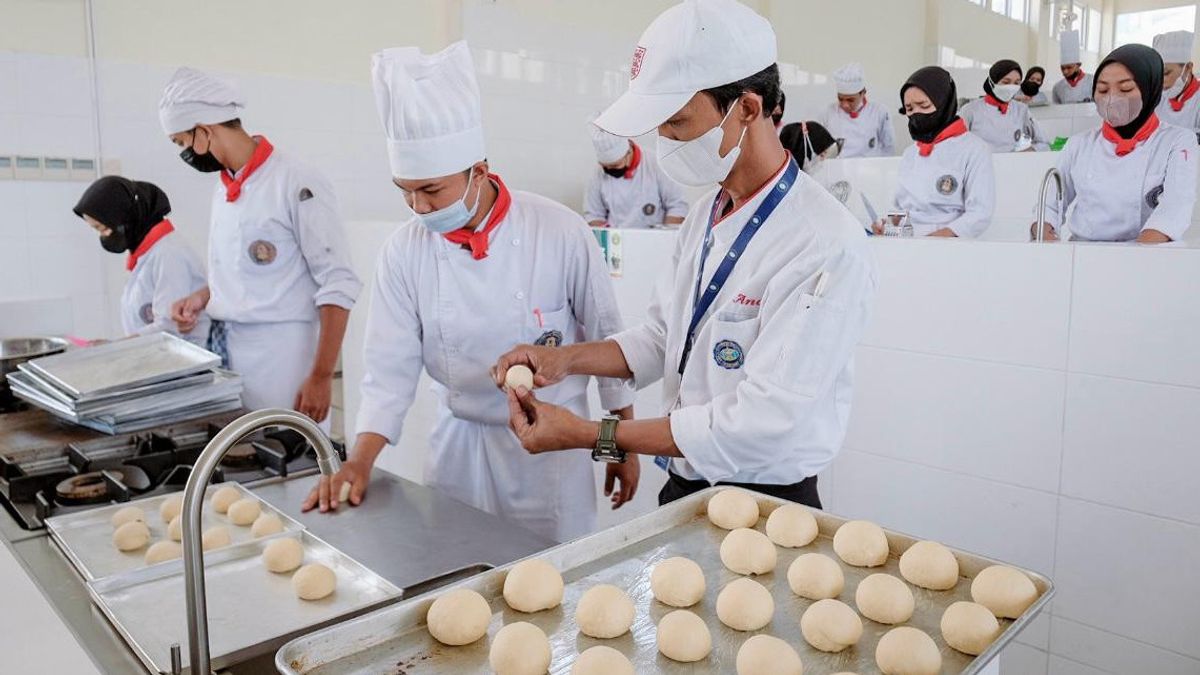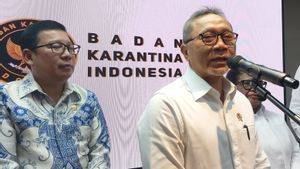JAKARTA - Training, certification, and empowerment are one of the flagship programs of the Ministry of Tourism and Creative Economy in collaboration with various parties that have proven effective in improving competence and competitiveness of parekraf human resources (HR). ).
The Adyatama of Tourism and Creative Economy, the Main Expert of the Ministry of Tourism and Creative Economy, Nia Niscaya, in "The Final Episode of Weekly Brief With Sandi Uno" at the Sapta Pesona Building, Central Jakarta, Monday (14/10/2024), revealed that the Ministry of Tourism and Creative Economy throughout 2020 to 2024 collaborated with various stakeholders to develop various programs to realize superior and competitive tourism and creative economy human resources.
"A total of 27,200 tourism actors and 54,302 creative economy actors have received competency training. Meanwhile, 63,412 tourism and creative economy actors have been given certification facilitation," said Nia Niscaya.
To measure the impact of these training and certification programs, the Ministry of Tourism and Creative Economy through the Deputy for Resources and Institutions in collaboration with the NHI Bandung Poltekpar conducted an impact survey on this strategic program. The survey was conducted on 1,143 tourism and creative economy actors from 34 provinces with the most respondents being the millennial generation, which was 57.7 percent.
SEE ALSO:
As a result, HR training and certification programs in the tourism sector and the creative economy have had a positive impact. Especially in increasing income, new job opportunities, and career development.
As for the details, the survey results show that most of the workers in the tourism sector and the creative economy have a working period of more than five years. Namely, 64.5 percent for the tourism sector and 49.6 percent for the creative economy sector. This figure, said Nia, indicates high stability in the tourism sector with experienced and established labor in its field.
Meanwhile, the presentation of the working period between one and three years is also quite high both in the tourism sector and the creative economy. Namely, each above 20 percent.
"This indicates the regeneration and relatively fast entry of new workers. This also reflects dynamic growth in the tourism sector and the creative economy, with many opportunities for new workers," said Nia.
Nia further explained that training for parekraf human resources has also had various impacts. These include increasing income, opportunities to get new jobs, increasing knowledge, promotion of positions, expanding relations, and recognition, as well as several other benefits.
As many as 60.3 percent of respondents stated that they experienced an increase in income, while 52.8 percent experienced an increase in careers. "The largest percentage increase in revenue is 15 to 20 percent," said Nia.
From the results of the survey conducted, data was also obtained that the training suitability index reached 4.16 (indict value 5) which reflected the relevance of training programs to industrial needs and the success index of 3.80 which showed that the training had had a fairly good impact in improving participant competence. In terms of convenience, the score of 3.91 shows that this training is quite easy for participants to follow.
"This survey also reaches 36.2 percent of human resources who have never participated in training to find out their hopes for the field of training in demand. In addition to training in hotels or accommodation and understanding attractions or tourist destinations, in the fields of marketing training, entrepreneurship, design and content creators also have great enthusiasts," said Nia.
The survey results also show that 71.5 percent of tourism HR competency certification activities and the creative economy are still facilitated by the government. Meanwhile, the private sector only has a contribution of 4.5 percent.
Just like training, certification also has various impacts such as increasing income, opportunities to get new jobs, increasing knowledge, increasing positions, and several other benefits.
As many as 52.2 percent of respondents experienced an increase in income while 11.2 percent experienced an increase in their careers. The largest percentage increase in revenue was 15-20 percent.
"This still shows the government's dominant role. We hope that the private sector will play a more active role, so that the certification program can be more inclusive and cover more workers," said Nia.
The English, Chinese, Japanese, Arabic, and French versions are automatically generated by the AI. So there may still be inaccuracies in translating, please always see Indonesian as our main language. (system supported by DigitalSiber.id)


















